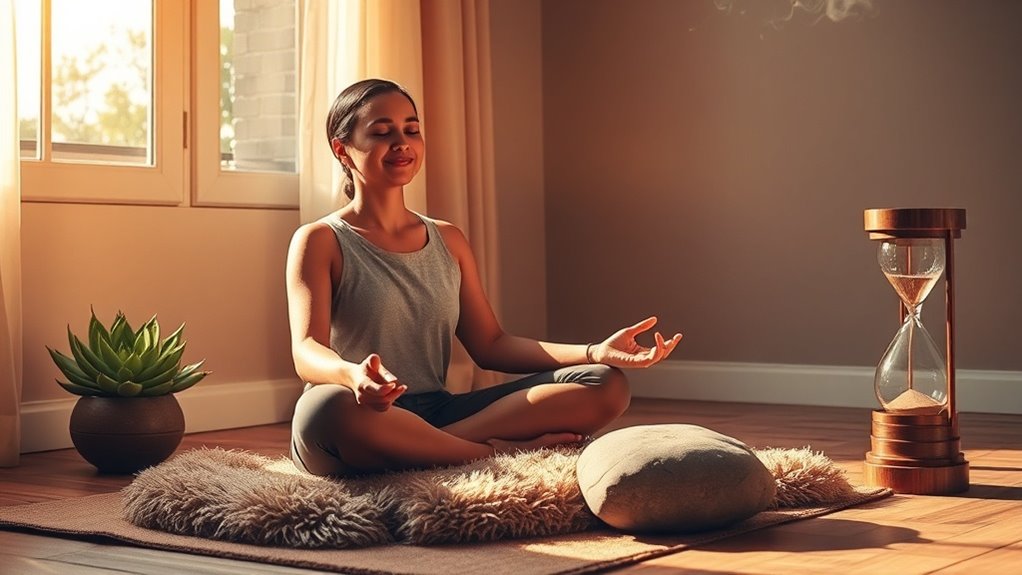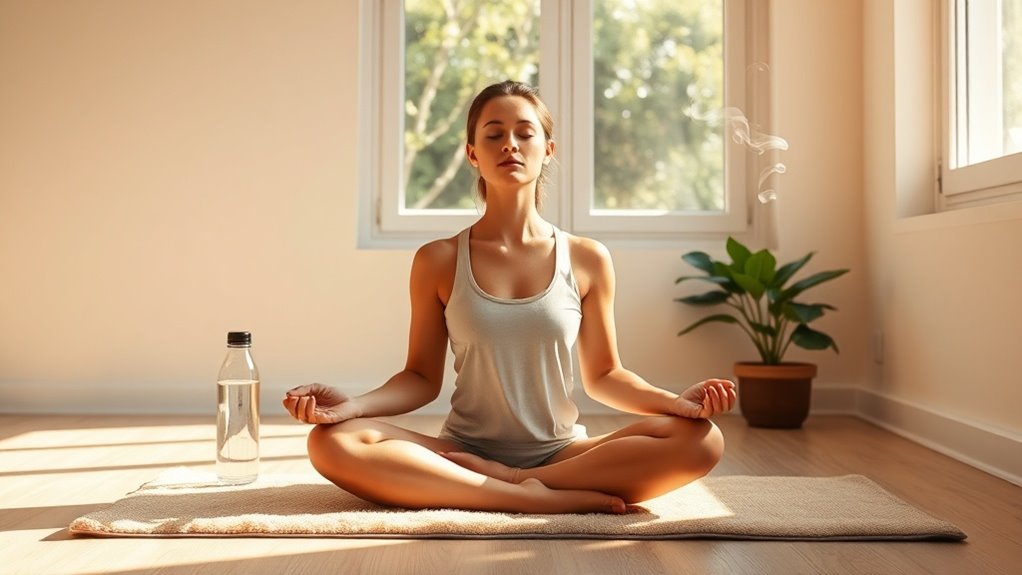Breathing Exercises That Improve Sleep and Relaxation
Did you know that your breath can significantly influence your sleep quality? Many people overlook the power of simple breathing exercises, yet they can lead to deeper relaxation and better rest. By engaging in techniques like diaphragmatic breathing and the 4-7-8 method, you can effectively calm your mind and body. Discover how these practices work and the benefits they can bring to your nightly routine.
Understanding the Importance of Breath for Sleep
When you understand how crucial breathing is for sleep, you’ll appreciate why it can be a game-changer for your nighttime routine.
Proper breathing techniques can enhance relaxation, lower stress levels, and help your body transition into a restful state.
Research shows that focusing on your breath promotes better sleep, making breathing for better sleep an essential element of your evening habits. Additionally, establishing a night breathing routine lowers stress levels, which prepares your body for rest and enhances sleep quality.
Diaphragmatic Breathing Technique
Although you may not realize it, mastering the diaphragmatic breathing technique can significantly improve your sleep quality.
Here’s how to practice it effectively:
- Find a comfortable position, sitting or lying down.
- Place one hand on your chest and the other on your abdomen.
- Inhale deeply through your nose, feeling your abdomen rise.
- Exhale slowly, allowing your abdomen to fall.
Incorporate this technique nightly! Deep breathing activates the body’s relaxation response and can help quiet racing thoughts for a smoother sleep transition.
4-7-8 Breathing Method
Building on the foundation of diaphragmatic breathing, the 8-8 breathing method offers a structured approach to further enhance your relaxation and sleep quality.
This technique involves inhaling deeply for a count of eight, followed by an eight-count exhale. Research shows this method can reduce stress, lower heart rates, and promote a sense of calmness, making it an effective tool for better sleep. Furthermore, this method activates the parasympathetic nervous system, which is crucial for inducing relaxation and preparing the body for sleep.
Box Breathing for Calmness
Box breathing, often used by athletes and professionals to enhance focus and reduce anxiety, is a powerful technique that can also promote calmness and improve sleep.
To practice it effectively, follow these steps:
- Inhale deeply through your nose for 4 seconds.
- Hold your breath for 4 seconds.
- Exhale slowly for 4 seconds.
- Pause and hold for another 4 seconds.
This simple method can help center your thoughts and calm your mind. Incorporating deep belly breathing into your routine can further enhance your relaxation experience.
Alternate Nostril Breathing for Balance
Alternate nostril breathing is a simple yet effective practice that helps restore balance and harmony within your body and mind. By engaging both nostrils, this technique promotes relaxation and reduces anxiety. Research shows it activates the parasympathetic nervous system, enhancing mental clarity and emotional stability. Additionally, this practice allows for deepening breath which sends calming signals to the brain. Try incorporating this practice into your daily routine for improved focus and a greater sense of overall well-being.





